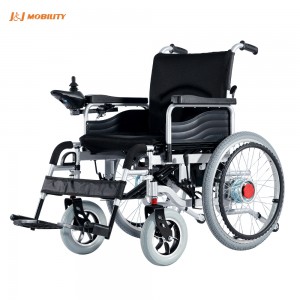How Electric Wheelchairs Function
Electric wheelchairs have transformed the lives of millions facing mobility challenges globally. By providing users with newfound independence, these devices allow seamless navigation through homes, communities, and workplaces. Curious about how electric wheelchairs operate? In this article, we delve into the technology behind electric wheelchairs and their role in assisting individuals with mobility impairments.
Essential Components of Electric Wheelchairs
An electric wheelchair comprises several key parts that work together to enable mobility:
Frame: Typically constructed from lightweight materials such as aluminum or titanium, the frame is designed for both strength and maneuverability.
Motors: These wheelchairs are equipped with one or more electric motors that drive the wheels, enabling movement forward or backward. Motors are usually mounted on the wheels or the wheelchair’s frame.
Batteries: Rechargeable batteries, located beneath the seat, provide the energy required to power the electric motors.
Control System: This system interprets commands from the user via a joystick or input device, allowing for control over direction and speed.
Drive System: This connects the motors to the wheels and consists of gears, belts, and other components that transfer power from the motors.
Brakes: Essential for safety, brakes allow the user to stop the wheelchair quickly and securely, typically activated by a lever or button.
How Electric Wheelchairs Operate
To understand how electric wheelchairs function, consider the following process:
User Input: The user directs movement using the joystick or input device.
Control System: This interprets user commands and signals the drive system accordingly.
Drive System: It transfers power from the motors to the wheels, enabling movement.
Batteries: They supply the necessary energy to operate the entire system.
Brakes: When user input stops, the brakes engage, safely halting the wheelchair.
Types of Electric Wheelchairs
Electric wheelchairs come in various models, each designed to meet specific user needs:
Standard Electric Wheelchair: These are versatile for indoor and outdoor use, ideal for individuals with limited upper body strength.
Power Assist Wheelchair: Designed for users with some upper body strength, these wheelchairs feature power-assist wheels to navigate inclines and rough terrain with ease.
Standing Electric Wheelchair: This type allows users to stand while supported, promoting health benefits like improved circulation.
Tilt-in-Space Wheelchair: This model can tilt the user back, aiding posture and helping to prevent pressure sores.
Advantages of Electric Wheelchairs
Electric wheelchairs offer numerous benefits compared to traditional manual models:
Increased Independence: Users can move independently, significantly enhancing their quality of life.
Enhanced Mobility: Designed for ease of maneuverability, these wheelchairs facilitate participation in various activities and events.
Reduced Physical Strain: They eliminate the need for manual propulsion, decreasing physical fatigue for users with limited upper body strength.
Customization Options: Electric wheelchairs can be tailored to meet individual needs, including adjustable seat heights and specialized accessories.
Improved Safety: Equipped with features like brakes and anti-tip devices, electric wheelchairs help reduce the risk of accidents.
Limitations of Electric Wheelchairs
While electric wheelchairs provide substantial advantages, there are some limitations to consider:
Cost: They tend to be pricier than manual wheelchairs, which may limit accessibility for some individuals.
Maintenance Requirements: Regular upkeep is essential for optimal performance, including checks on batteries and motors.
Battery Life Variability: The range can differ based on usage, necessitating careful planning around battery capacity.
Size and Weight: Often larger and heavier than manual models, electric wheelchairs can be more challenging to transport.
Accessibility Issues: These wheelchairs may not be suitable for all environments, particularly where ramps are lacking or on rough terrain.
Conclusion
Electric wheelchairs have significantly enhanced mobility for individuals with disabilities, fostering greater independence and freedom. Powered by electric motors and controlled by user input, these devices simplify navigation in various environments. While they offer many benefits, considerations like cost and maintenance are crucial. Ultimately, electric wheelchairs are vital tools that enable users to engage in activities they might otherwise find challenging.
Post time: Oct-19-2024


